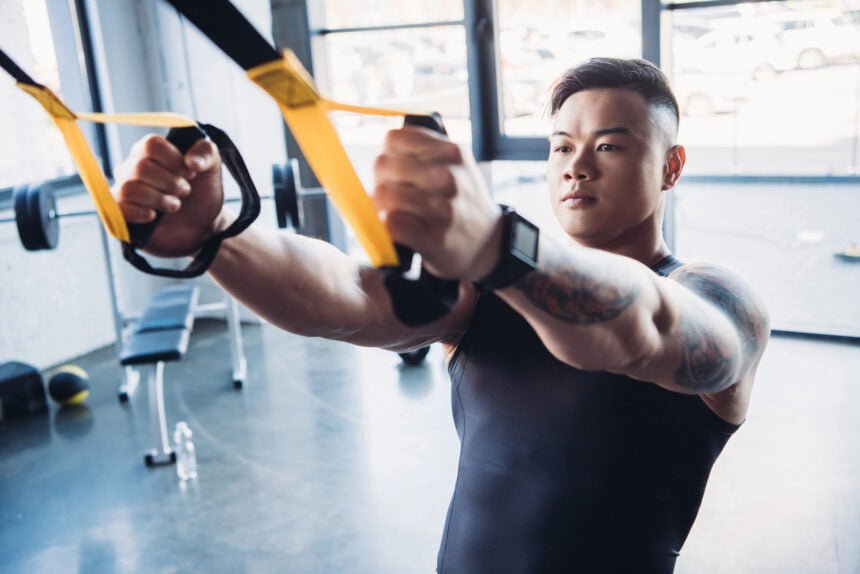Did you know that 56.4% of women and 41.7% of men have tried losing weight in the last year? Sadly, many aren’t successful because they don’t follow the right approach.
There are a lot of things that you need to think about when you are trying to lose weight quickly. We have talked about weight loss medication and exercise, but there is a lesser-known approach to losing weight that involves using a tool you probably never thought of.
They offer your muscles an incredible workout, are lightweight, and are convenient to pack in a suitcase or keep at home.
Yes, we are talking about resistance bands.
When you use resistance bands for strength training, picture them as large rubber bands with varying degrees of resistance. When you use them appropriately, you may target your arms, legs, core, glutes (buttocks), chest, back, and shoulders, among other important muscle groups. This is one reason they are used in a lot of gym equipment.
Continue reading to find out why resistance bands work so well and tips for using them.
What is resistance band training?
Strength training includes workouts with resistance bands. Stretchiness is the key to resistance bands, commonly known as elastic or workout bands. Resistance rises when you pull the band to lengthen it.
When the weight increases, dumbbells, kettlebells, and weight plates become bigger and heavier, but resistance bands just get thicker; the more resistance you must overcome to stretch the band, the thicker the band. Tension may be achieved with a smaller band up to 6 pounds and a larger one up to 150 lb.
Resistance bands are available in a variety of sizes and forms, including elastic tubing with a handle that can be switched out on either end and shorter, longer loops.
Take note that to fulfill the recommendations’ requirement of 150 minutes per week of moderate-intensity aerobic activity, you will need to engage in cardio activities such as walking, swimming, cycling, and running.
Benefits of resistance band training
Resistance bands have several significant potential health advantages, such as:
Enhanced strength – Exercise bands are equally as useful for promoting strength increases as free weights (such as dumbbells and barbells) and weight machines.
Preserve your muscular mass – According to Harvard Health Publishing, you start to lose 3 to 5 percent of your muscle mass per decade after the age of thirty. Resistance band training is one type of strength exercise that can stop or even reverse this loss. People who used resistance bands at least three times a week for at least 12 weeks and trained for 40 to 60 minutes each time had a substantial increase in muscle mass, according to a systematic review and meta-analysis of research conducted on older individuals.
Helps with recovery from injuries – To facilitate healing after an accident or surgery, resistance bands are frequently used in rehabilitation programs. You may use resistance bands to carry out a safe and efficient low-impact resistance workout program for strengthening. Ultimately, the possibility of getting hurt is reduced when you drop a resistance band on your foot as opposed to a dumbbell. Additionally, using a band makes it simpler to modify the resistance than attempting to estimate which dumbbell to use by adjusting the length or using a band of varying thickness.
Improved cardiovascular health – Exercises that build muscle help elevate blood pressure and reduce the risk of heart disease and hypertension. Senior people who use resistance bands for strength training report improved heart health metrics, such as blood pressure.
Do resistance bands help with weight loss?
Strength training is what resistance band training entails, thus it might not burn as many calories in a session as cardio.
However, resistance band exercises do encourage muscular growth, which may help with fat reduction. Since muscle has a higher metabolic activity than fat, your metabolism will increase. In one research, men and women who trained with weights for 24 weeks had increases in their resting metabolic rates of 9 and 4%, respectively. That equates to an additional 50 calories expended daily for women and 140 more calories for men.
However, the extra calories burned by resistance band exercise are not that great, and strength training by itself is probably not going to help you lose weight. Your weight reduction regimen may be more successful if you incorporate strength training into it in addition to calorie restriction or aerobic activity.
Resistant band workout equipment
These are the supplies you’ll need for resistance band training.
Resistance bands – Resistance bands come in sets or can be bought separately. A resistance band set has the benefit of offering bands in three different resistance or tension levels: light, medium, and heavy. (greater tension is equal to lifting more weight). For upper-body workouts, you could require a thinner band, and for lower-body exercises, a heavier one. Resistance band tension levels are usually color-coded by brands, but keep in mind that colors might differ between brands. Thus, make sure you’re obtaining the right resistance level by carefully reading the label.
Door attachment – Exercises with a resistance band can be made simpler by several attachments. One end of a band must be tied to an anchor point, such as a doorknob, beam, or pole, for many exercises. A door anchor, which is a strong strap that fastens to a resistance band and can be closed inside a door to offer a safe foundation for workouts, might be a wise purchase if you lack a strong anchor point. A table or chair might not be strong enough.
Wrist or ankle cuff – An ankle or wrist cuff, which is a cushioned cuff that fits around your ankle or wrist and fastens to a resistance band, functions similarly to a door attachment in that it can offer a safe anchor for specific resistance band exercises.
Workout mat – For your resistance band training, an exercise or yoga mat provides padding and a nonslip surface. In addition to keeping your back and knees safe during floor activities, it may shield your floor from sweat.
What to eat before during and after your workout
For the best results, resistance band training requires certain dietary guidelines, much like other activities. Whether you’re training for an event, building muscle, or both, fueling yourself will help you reach your objectives.
Before
Although you don’t have to eat anything if you work out first thing in the morning, having a snack from Built may help if you become hungry easily.
During
Unless the activity lasts more than 70 minutes, there’s no need to eat during a resistance band workout. In that case, a mid-workout carbohydrate boost could be beneficial.
After
After your workout, you should ideally consume a regular meal like breakfast, lunch, or supper. A combination of protein, healthy fats, and complex carbs should be included in this meal.









